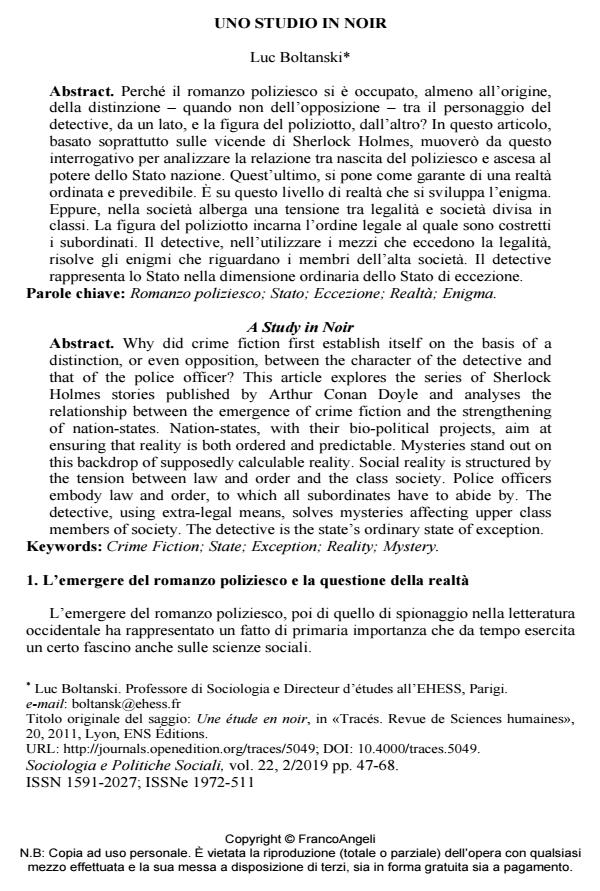A Study in Noir
Journal title SOCIOLOGIA E POLITICHE SOCIALI
Author/s Luc Boltanski
Publishing Year 2019 Issue 2019/2
Language Italian Pages 22 P. 47-68 File size 254 KB
DOI 10.3280/SP2019-002004
DOI is like a bar code for intellectual property: to have more infomation
click here
Below, you can see the article first page
If you want to buy this article in PDF format, you can do it, following the instructions to buy download credits

FrancoAngeli is member of Publishers International Linking Association, Inc (PILA), a not-for-profit association which run the CrossRef service enabling links to and from online scholarly content.
Why did crime fiction first establish itself on the basis of a distinction, or even opposition, between the character of the detective and that of the police officer? This article explores the series of Sherlock Holmes stories published by Arthur Conan Doyle and analyses the relationship between the emergence of crime fiction and the strengthening of nation-states. Nation-states, with their bio-political projects, aim at ensuring that reality is both ordered and predictable. Mysteries stand out on this backdrop of supposedly calculable reality. Social reality is structured by the tension between law and order and the class society. Police officers embody law and order, to which all subordinates have to abide by. The detective, using extra-legal means, solves mysteries affecting upper class members of society. The detective is the state’s ordinary state of exception.
Keywords: Crime Fiction; State; Exception; Reality; Mystery.
Luc Boltanski, Uno studio in noir in "SOCIOLOGIA E POLITICHE SOCIALI" 2/2019, pp 47-68, DOI: 10.3280/SP2019-002004